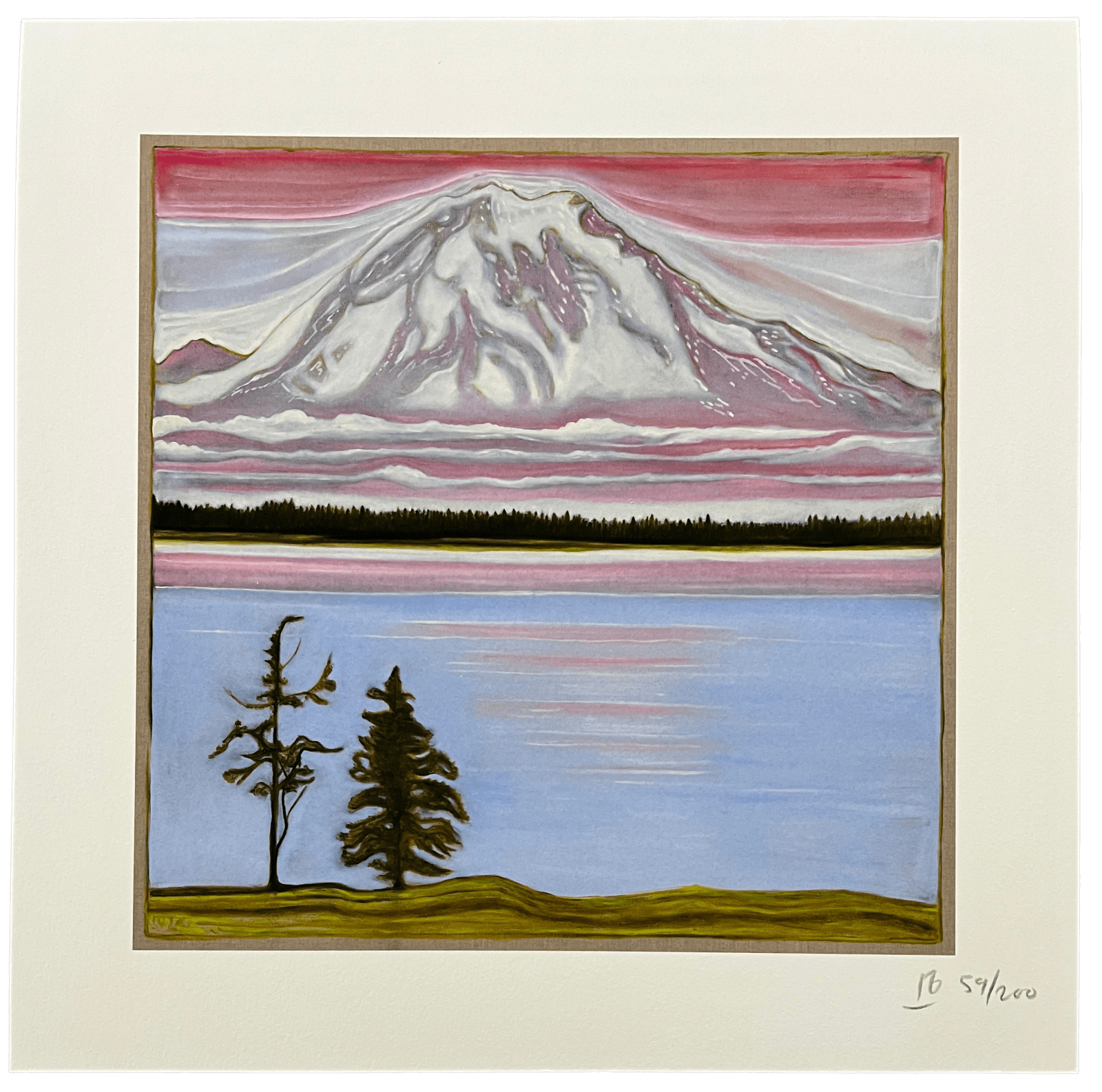Billy Childish U. K., b. 1959
Tahoma and Two Trees, 2024
Archival print on paper
Signed and numbered by the artist, lower right on recto
Signed and numbered by the artist, lower right on recto
30.5 x 30.5 cm
Edition of 200
© Billy Childish
Further images
Foregoing realism, Billy Childish applies loose, textured marks to capture the landscape of Mount Tahoma—the indigenous name for Mount Rainier. He portrays a pair of trees standing sentry in 'Tahoma...
Foregoing realism, Billy Childish applies loose, textured marks to capture the landscape of Mount Tahoma—the indigenous name for Mount Rainier. He portrays a pair of trees standing sentry in 'Tahoma and Two Trees,’ their presence evoking themes of solitude, contemplation, and resilience across time.
The mountain itself holds a deeply personal significance for Childish, having served as the backdrop to his wedding. Throughout his work, solitary trees recur as motifs, symbolising endurance and introspection—an inner landscape reflecting the external scene.
Childish’s palette is infused with the expressive tradition of German Expressionism, employing colour to conjure both the grandeur of nature and one’s own lived experiences. These emotive hues, soft and shifting with the light of the setting sun, create an atmosphere of serenity and poetic reflection. Childish’s approach bridges the physical and spiritual elements of the natural world, revealing an enduring fascination with landscapes both real and imagined.
The mountain itself holds a deeply personal significance for Childish, having served as the backdrop to his wedding. Throughout his work, solitary trees recur as motifs, symbolising endurance and introspection—an inner landscape reflecting the external scene.
Childish’s palette is infused with the expressive tradition of German Expressionism, employing colour to conjure both the grandeur of nature and one’s own lived experiences. These emotive hues, soft and shifting with the light of the setting sun, create an atmosphere of serenity and poetic reflection. Childish’s approach bridges the physical and spiritual elements of the natural world, revealing an enduring fascination with landscapes both real and imagined.





